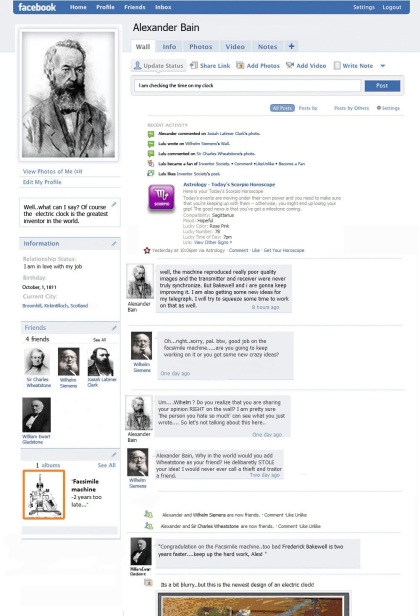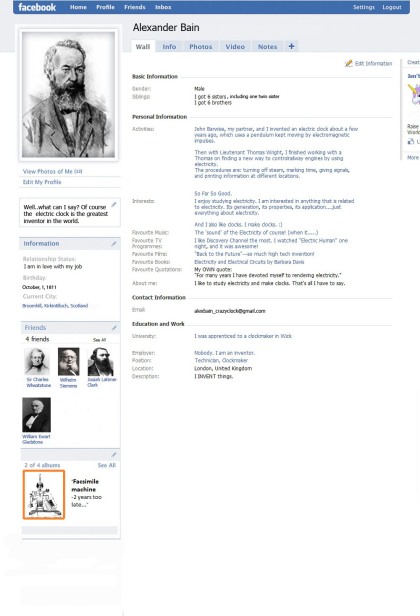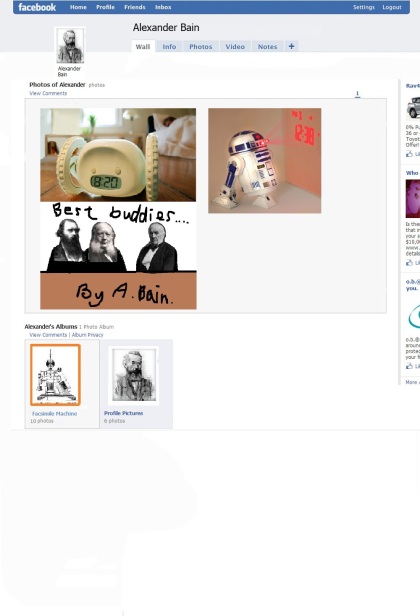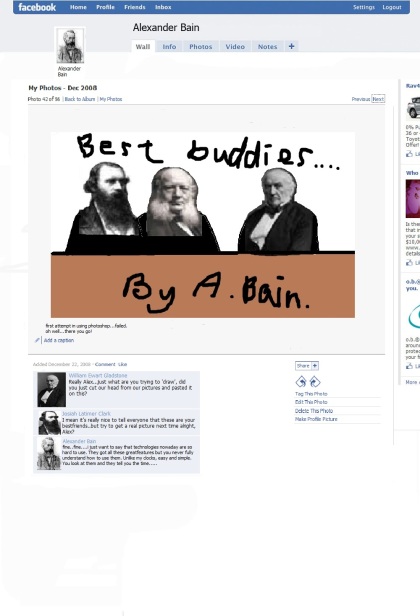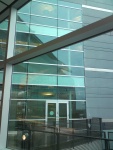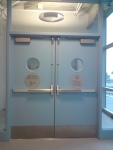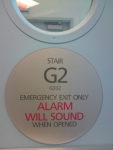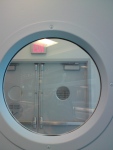Filed under: Uncategorized
2015
In 2015, five years after the GPS (Global Positioning System)was no longer a new born in the technology world, the AbleEye Company proudly presented the Navigation Eyepiece (NE), which the GPS is only one of the great systems that was programmed into the it. As the knowledge was commonly known, a GPS is an electronic compass that can calculate heading, latitude, and longitude. It is unaffected by not only the magnetic field, but also the weather and time of the day. Its resources were provided by a U.S. space-based global navigation satellite system, which received broadcast signals when the search of a specific location was called upon. The NE was the combination of 3D Mapping GPS(released in 2011) and the ‘experience it’ virtual reality program (released in 2013). Along with the traditional navigation that gave users distance and direction information, it also provided a perspective point of view and 3D data such as the length and width of a road, a brigde or a river, and height of a building, a tree, or a mountain. The NE consisted of two action modes: the ‘Ahead’, ‘Now’. In the ‘Ahead’ mode, the NE showed what was happening in twenty steps ahead and beyond in the present, which was extremely useful in situations such as having unseen obstacles around the corner. The ‘Now’ mode focused on the now moment, and the eyepiece lenses automatically switched to clear lenses, which users can view what was right in front of them with both eyes. One issue that the AbleEye Company had to strongly emphasized on was the NE was not intended to be used to predict what would happen down the road but to show users of what was happening in the present.
2020
In 2020, ten years after 2010, and five years after the birth of the Navigation Eyepiece, AbleEye once again proved its worthy leading place in the invention field with the latest product, the Go-There (GT). The company had abandoned the eyepiece style three years ago due to the users’ increased amount of complaints. They did not enjoy having a piece of device around their eyes for a long period of time, and since the images they saw in the eyepiece were too real, it gave them headache and nauseous feeling. For GT, it is a small hand held device approximately a size of a old style USB people used to have ten years ago. It worked similarly to the eyepiece, with the arrows keys, the selection of ‘Now’ and ‘Ahead’ modes, and a newly added monitor that replaced the job of presenting the 3D images. Though there were one great difference, a third mode was created.
The ‘Stay Put’ mode, the users could stay at where they were, by pressing the arrow keys on the eyepiece, it would then bring them to their destanation as if they were going there by themselves. The network of a NE is boundless, a user could choose to go for a walk in a park, go for a hike in a trail, or even to go visit a different country. This ‘Stay Put’ was the most popular feature of the device. It is especially loved by people who immigranted to another country. With the help of a NE, they were able to ‘go’ back to their home contry and enjoy the experience of being in a familiar place.
Yet, residents and shop owners expressed their worries, that their privacy was being invaded by a ‘Stay Put’ mode user. The user might take the advantages of being an invisible visitor and charge into the house or store while they were taking a shower or turning on a lock to go through a security door. AbleEye then promised that this kind of situation would never happened, because they had set a system that blocked a user from entering a private proterty or area that required admission without given his or her user ID and granted permission from the owner.
Travel agents once protested that this new technology would cause a difficult time in their work field. Since users can now stayed home an enjoy the ‘experiences’ of going on a vacation, the price of the airplane tickets and tour fees would be forced to decrease in order to attract customers. Yet, AbleEye assured them that no harm would be done because the real world would never be replaced by a virtual environment on a navigation system. The company also reminded that places such as the Louvre fell under the category of places that required admission, and the NE users were not able to enter without permission.
2029
In the year of 2029, its the year of celebration for AbleEye has written history. After ten years of rapid expansion and significant transformation, the Go-There is now the Be-There(BT).
Twenty-two years ago, the Cisco TelePresence On-Stage Experience demonstrated a Telepresence experience at Bangalore. During the presentation, the Cisco CEO situated in San Jose “beamed up” and interacted with the host on stage. Using the same but modified idea of the Digital Video and tele-immersioin room, Be-There is born. It creates a projected high-definition three-dimensional representation of a person, object, or landscape. It has the old ability to navigate, all three modes of ‘Now’, ‘Ahead’ and ‘Stay Put’, and other little features such as the clock and internet. It is small and light, and has a size of a watch which users can wear it as a wrist band.
References:
(2007, Novembr 15). Cisco Experimenting with an On-Stage Telepresence Experience. Retrieved April 4, 2010, from http://www.humanproductivitylab.com/archive_blogs/2007/11/15/cisco_experimenting_with_an_on_1.php
Josephbatac, A(June 2007) Star Wars hologram communication now a reality. Retrieved April 7, 2010, from http://www.allanjosephbatac.com/blog/2008/05/star-wars-hologram-communication-now-a-reality.html
gizmodo.com. Retriveved April 5, 2010, from http://gizmodo.com/345907/3d-gps-mapping-to-come-to-us-at-last
gpsreview.net. Retrieved July 3, 2010, from http://www.gpsreview.net/3d-mapping-from-tele-atlas/
Filed under: Uncategorized
http://www.wikipedia.ca. Retrieved March 27, 2010, from
http://en.wikipedia.org/wiki/Alexander_Bain_(inventor)
Bellis. M (2008). History of the Fax Machine & Alexander Bain. Retrieved March 29, 2010, from About.com Web site: http://inventors.about.com/od/bstartinventors/a/fax_machine.htm
Filed under: Uncategorized
Imagine you were lost in a foriegn country and you don’t have navigation devices with you, would you be able to find your way home? In the society nowaday, it seems to be imposible to do something as simple as finding directions without the aid of superior technology. Yet, way back before the GPS was invented, people could still found their way around by observing the stars in the night sky and the shadows cast by the sun. However, these methods can easily be afftected by the gloomy weather.At the pre-industrial era, where there was a litmited production,a more reliable naviagation tools were invented by the ancient China.
A simple instrumeent, the “south pointing fish” was made out of an iron or steel sheet that was cut out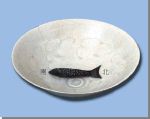 in a shape of a fish. By heating up the fish and soaking it in water, one were able to produce a weak state of magnetization. As the fish was placed on a calm water, its tail is pointed directly toward the noth, and head toward the south. It was inveneted sometime before the 2nd centry and was used for navigation by the 11th century. One of the modified versions of this naviation tool was the south-indicating ladle or sinan, which was invented during the Han Dynasty (206 BC-220AD). It consisted of a square bronze plate and a spoon-shaped needle made of magnetic lodestone. The plate had the circular shape that was carved as the eight trigrams of the I Ching, 24 directions and 28 lunar mansions. The square symbolized the earth and the circle symbolized the heaven. Its uses were for navigation and geomancy to determine the best location and time for such things as burials. The spoon shaped needle was light which can return to its original completeness after it responds to the attraction by orientation and directions.
in a shape of a fish. By heating up the fish and soaking it in water, one were able to produce a weak state of magnetization. As the fish was placed on a calm water, its tail is pointed directly toward the noth, and head toward the south. It was inveneted sometime before the 2nd centry and was used for navigation by the 11th century. One of the modified versions of this naviation tool was the south-indicating ladle or sinan, which was invented during the Han Dynasty (206 BC-220AD). It consisted of a square bronze plate and a spoon-shaped needle made of magnetic lodestone. The plate had the circular shape that was carved as the eight trigrams of the I Ching, 24 directions and 28 lunar mansions. The square symbolized the earth and the circle symbolized the heaven. Its uses were for navigation and geomancy to determine the best location and time for such things as burials. The spoon shaped needle was light which can return to its original completeness after it responds to the attraction by orientation and directions.
With the similar concepts of the Earth’s magnetic poles, compass is officially invented during the 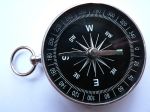 industrial era, where the external energy sources were commonly used to increase the rate and scale of production. The dry compass was invented in medieval Europe around 1300, and the liquid-filled magnetic compass in the early 20th century. The face of the both types of compasses have highlights on the points of north, south, east and west. Both are often built as a stand alone sealed instrument with a magnetized bar or needle turning freely upon a pivot, or moving in a fluid, and pointing in a northerly and southerly direction. A dry compass has a flexible surface inside the capsule to allow for changes caused by temperature or altitude. A liquid-filled compass consisted a magnetized needle inside a capsule completely filled with fluid such as oil. The fluid dampens the movement of the needle and causes the it to stabilize more quickly. North on the needle and other key points are often marked by some self-luminous materials to allow clear reading at night or in poor light. With the spread of use of compasses, it greatly improved the safety and efficiency of travel, especially ocean travel.
industrial era, where the external energy sources were commonly used to increase the rate and scale of production. The dry compass was invented in medieval Europe around 1300, and the liquid-filled magnetic compass in the early 20th century. The face of the both types of compasses have highlights on the points of north, south, east and west. Both are often built as a stand alone sealed instrument with a magnetized bar or needle turning freely upon a pivot, or moving in a fluid, and pointing in a northerly and southerly direction. A dry compass has a flexible surface inside the capsule to allow for changes caused by temperature or altitude. A liquid-filled compass consisted a magnetized needle inside a capsule completely filled with fluid such as oil. The fluid dampens the movement of the needle and causes the it to stabilize more quickly. North on the needle and other key points are often marked by some self-luminous materials to allow clear reading at night or in poor light. With the spread of use of compasses, it greatly improved the safety and efficiency of travel, especially ocean travel.
In the post-industrial era, when an economic transition has occurred from a manufacturing based 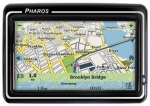 economy to a service based economy, A gyrocompass can be used to find accurate directions without being affected by stray magnetic fields or nearby electrical power circuits. A recent development is the electronic compass and it frequently appears as an optional subsystem built into GPS device. A GPS, Global Positioning System, is a electronic compass that can calculate heading, used with a sextant to calculate latitude, and with a marine chronometer to calculate longitude. It provided a much greater navigational capability. It is unaffected by not only the magnetic field, but also the weather and time of the day. Its resources are provided by a U.S. space-based global navigation satellite system, which receives boardcst signals when the search of a specific location is called upon. Its purpose was originally for military uses, and later also for map-making, land surveying, commerce, scientific use, and tracking.
economy to a service based economy, A gyrocompass can be used to find accurate directions without being affected by stray magnetic fields or nearby electrical power circuits. A recent development is the electronic compass and it frequently appears as an optional subsystem built into GPS device. A GPS, Global Positioning System, is a electronic compass that can calculate heading, used with a sextant to calculate latitude, and with a marine chronometer to calculate longitude. It provided a much greater navigational capability. It is unaffected by not only the magnetic field, but also the weather and time of the day. Its resources are provided by a U.S. space-based global navigation satellite system, which receives boardcst signals when the search of a specific location is called upon. Its purpose was originally for military uses, and later also for map-making, land surveying, commerce, scientific use, and tracking.
References
http://inventors.about.com/od/cstartinventions/a/Compass.htm. Retrieved March 23, 2010. From inventors.about.com
eurserveur.insa-lyon.fr/…/boussoleeng.html. Retrieved March 23, 2010. From euserveur.insal-lyon.fr.
http://www.smith.edu/…/compass2.html. Retrieved January 20, 2008. From http://www.smith.edu
PS.posted up at 1:15am on March 25.
Filed under: Uncategorized
TECH 114 – Lab 2
Connie Lee (301112513)
Jessica Cheng (301104451)
Yen Lin (301123901)
Lulu Huang (301120497)
Invisible Audiences in the Food Court
An example that explains the physical space of the invisible audiences can be found in the food court. A food court is a large area where people can enjoy their meals after purchasing them in the nearby store. While people are busy doing things and minding their own businesses, they might not realize or be aware that they are being observed, and the people observing them become the invisible audience. Some people actually enjoy watching others in busy environments like train and bus stations, parks, etc. They find observing various types of people in a single setting interesting. These watchers become the invisible audience.
In a way, this physical setting can be similar to observing a forum, or a chatroom, where you can hear or read other people’s conversations, as a food court is typically loud and informal. A person overhears two people talking at a nearby table while having lunch and eavesdrops on their conversation. The person listening can be the “invisible audience”; the pair conversing may not know that someone is listening to their discussion.
A mediated public as food court is similar to these inadvertent public blogs online, where bloggers don’t expect strangers to paying attention to. Usually for these blogs, there are no huge audience who read the blogs regularly. The readers are usually invited guests instead of strangers. However, since the blog is open in public, there might be some unexpected readers that read the posts regularly without leaving comments to the author. This can also be an invisible audience online.
Some network platforms, as Facebook, Twitter or BBS are similar to the food court. They are both places that people can not only chat on, but also can see others chatting. They are both mass media that are open to everyone. In Facebook, when two people are chatting on it, then other people who are just on that webpage would see their words. These people would be the “invisible audience”. If they don’t leave a message on that webpage, nobody knows they have come.
PS: I posted this up at 11:35pm March 18, 2010. But the blog upload time is off.
Filed under: Uncategorized
Today during the lecture, the class was discussing about the use of facebook. I personally don’t go on facebook very often; however, I do enjoy looking at other people’s (whom I know)facebook. I came to Canada a few years ago, and most of my friends and family are in Hong Kong; by looking at their pictures posted on facebook and leaving messages on their walls, helps me keep in touch with them and know how they are doing. Yet, as much as I wish to keep the relationship, as years pass, the friendship fades away slowly. I still go up to facebook to check on them form time to time, but it makes me sad each time because when I look at their pictures, I remember the lost friendship.
Filed under: Uncategorized
I do not think it was a very successful collective activity in terms of crowd sourcing unless we had a excellent group of editors. The benefits of crowd sourcing is that it is efficient and powerful due to the men power. Yet, if there isn’t a system that can keep everyone in check, it became a confusing and tiring process. During the lab activity, there are people who were willing to step up and take the leadership role. However, due to the fact that the leaders might have little experiences in leading a class-size group of students, it got rather difficult when the situation demanded them to suddenly jump into such active role. Also, there were people who participated in this activity were not as committed as the others, it was easy for people to be discouraged and cause the quality of the project to decrease. Eventually, everyone was able to submit their own post, yet, because the posts were all edited by students, the quality might be not as good. Although, the synchronization of the context was hard to achieve, it was nice to have a mixed of all kinds of style and form, as well as a blend of content and opinions. With point forms, paragraphs, summaries, pictures, graphics, charts, tables made the pages rich and colourful, and with the different styles of writing also kept the reading light and lively. If I were to produce this research project all myself, I believe it would be quite boring. This is because I am one person, which means I cannot represent everybody. It is almost impossible to reach a point where a person can voice out opinions that held by more than ten different people. Therefore, the research project would be only supporting my point of views, which could possibly be biased sometimes. Same with the depth and content of the project, it would not be as well developed as producing with a group of people due to time limit and men power.
Filed under: Uncategorized
A simple story happened in Simon Fraser University Surrey on February 20, 2009 at around 12:30pm. It was a warm and sunny afternoon; I was sitting in front of the big glass window at the end of the long corridor on the 3rd floor of the campus.
As I was eating my lunch, I casually looked out the window and I sensed some movement out of the corner of my eyes. I looked to the left and saw a student in the opposite building connected to the campus. His eyes brightened when he met my gaze. He waved and pointed at the door. A partial of the building wall was made of glass which allowed me to see the three fire doors that trapped him. I acknowledged his need, and walked to the doors. When I reached them, there was a sign with red words that said Alarm will sound when opened. I hesitated and went back to the glass window. I waved at the person and tried to mouth: I cannot open the door. He obviously could not understand what I was trying to tell him. We have silent conversation for a few seconds and none of us understand each other. He made a gesture of No, and I copied him. His shoulders seemed to slump and I sat down again.
Although I stopped helping him, I kept my eyes on him. I saw he walked up to the fourth and fifth floor. He stopped on both floors for some minutes and tried to get people’s attention. He was ignored. Eventually, he wandered back to the 3rd floor, and waved at me again. He pointed at the doors and I shook my head. I made a gesture of using the phone, but he shook his head and gestured something like “no batteries”. I pointed down meaning I am going downstairs, and I mouthed: I will go get help, but I was pretty sure he didn’t know what I was doing. I went to the security desk and told the securities what was happening. They told me that a person cannot possibly be trapped in there. I asked about the alarm of the fire door and they seemed to ignore the question. They simply told me to tell him to “go back”, and he would be able to get out. I ran back up and told him to go back, by mouthing the words and pointing at the direction of his back. He turned around and anxiously looked. He mouthed something; I guessed it was “There are no doors”. I ran back down but got no useful answers back.
There were no signals.
I ended the call and so did he. Then he pointed at me. I understood and started gesturing my phone numbers. I could sense people passing by staring at my somewhat awkward performance.My finger jumped to the talk button the moment my phone started ringing.
“Hello?”
“Hello?”
We said at the same time. I paused and he started talking non-stop on how he got behind the three doors.
“I got lost and I went through the fire doors. I got through them all. Go open them, it won’t sound. Trust me.” He instructed.
“It won’t sound. Trust me.” He said again.
Nothing happened.
I opened the other two doors, and he finally got out. He thanked me twice and we said goodbyes. Then he walked down the corridor and I sat back down in front of the glass window.
I continued my lunch and felt accomplished. Yet, I thought maybe it would only take seconds if I was brave enough to open the doors in the first place.
Filed under: Uncategorized
By Yen Lin, Lulu Huang, Connie Lee, and Jessica Cheng
Part I: Communication in everyday life Tell me about the different ways that you used communication for 24 hours in your journal.
Connie: I used mostly MSN as my daily communication technology. The other medium I use are e-mail and cell phone. I also use Google to do researches that helps gain my knowledge of the world.
Jessica: I used many forms of communication in the span of 24 hours, though some overlapped. Twitter, email and MSN chat are three different platforms I used to communicate in the same manner: using text. Internet browsing may also be included, as I frequent some online forums and post messages as well. The exception was when I used my cell phone to communicate using speech.
Lulu: MSN is the most daily communication medium. And other technology I used is Facebook and BBS, to contact my friends and chat with them. I also used iPHONE to call.
Yen: I use cell phone, MSN, Facebook for socialization with my friend, email and WebCT for school use, and Google and television to help me to be more familiar with the world and what I am interested.
2. What was the most common communication media that you used in 24 hours?
Connie: MSN is the most common communication media.
Jessica: Twitter and forum posting were both the most common media I used in 24 hours.
Lulu: MSN. When I woke up, the first thing was to log in MSN, and I log out until I went to sleep.
Yen: MSN
3. What was the most common purpose for the communication media you used?
Connie: The most common purpose for the communication media I used is to chat with people and to have instant conversation with long distance friends.
Jessica: I mainly use Twitter to chat with online friends, as I am not usually logged in onto instant messaging services such as MSN Live. As for my posts on forums, I usually discuss things relevant to my interests. Both of these media allow for the user to communicate with others, though Twitter is considerably more faster-paced, whereas I would be more likely to put more thought in my forum posts and be more articulate due to the lack of a restrictive character limit.
Lulu: The most common purpose for the communication media I used is to contact my friends more convenient even for the friends in other countries.
Yen: The most common purpose for the communication media I used was socialization with friends.
4. What do you think you learned most about the role of communication media in your everyday life by keeping this journal?
Connie: By keeping this journal, I learned that I have more ‘MSN talk’ than the actual face-to-face communication with others.
Jessica: I learned that I spend quite a lot of time online, whether for schoolwork or for leisure. The day I recorded my media-related activities was actually a somewhat busier day for me – other days, I would check Twitter and forums at regular intervals every few hours to check for responses to my messages or interesting materials to reply to.
Lulu: Through this journal I found the communication mediums I used are all should get on internet, as MSN, Email, BBS, and Facebook.
Yen: MSN plays an extremely heavy role in my life. I use it to keep contact with my friends. MSN is my dominant communication media for socialization.
5. What was the most surprising thing that you learned from keeping this journal?
Connie: It was surprising that the technology I enjoy to use the most, which is YouTube, is one of the technologies that I used the least time.
Jessica: The most surprising thing was the amount of time I spent browsing the Internet compared to other media.
Lulu: From keeping this journal, the most surprising thing for me is that if there is no internet in this world, the only way I can communicate with my friends is phone, which is very expensive if I call the long distance friends.
Yen: I spent more than one-third of the day on MSN. It actually steals my time so that I often feel there is always not enough time for me to do my work. Since MSN is my dominant communication media, it will be difficult to keep in touch with my friends without it
6. What are some of the positive implications about having communication media in your life?
Connie: The greatest advantage I got from using the media, the internet, is that I am able to keep in touch with the world anytime I want. I can chat with my friends, read and watch news, find entertainment and do research on assignments just by simply clicking on the mouse.
Jessica: The main positive implication about communication media’s presence in my life is the mere fact that I can communicate with other people online – some of whom I would’ve never met nor talked to otherwise. It also allows me to experience material which would be inaccessible to me. For example, I frequently use a video site named “Nico Nico Douga”, which is basically the Japanese equivalent of Youtube – with the unique distinction of that it has a pseudo-real time element in its’ commenting system. Comments scroll across the screen as the video plays and gives the very real impression that you are watching with other people, rather than having to scroll downwards and away from the video. Also, with the advent of Google, information is easily accessed, compared to a library, which may have a limited number of resources dealing with particular subjects.
Lulu: I only need to pay the internet fee for any of my communication mediums, even for long distance communications.
Yen: I can easily keep in touch with friends all over the place and connect with the world and follow course schedule.
7. What are some of the negative implications about having communication media in your life?
Connie: One of the greatest disadvantages using the media is that once I started searching through the internet, it takes up a lot of time because there is just so much interesting information. If I am not able to pull myself out, I would be spending too much time using the computer. Also, I rely heavily on the internet since it is very quick and convenience to search for information online. This causes me to slowly lose the ability to look for actual materials that are also available in other places such as the library.
Jessica: Several negative implications I can think of: First, the somewhat addictive nature to communication media. With so much to do and participate in, it’s not difficult at all to suddenly find yourself having spent hours just surfing and chatting online and not having gotten any work done. Second, the ease of using resources such as Google and Wikipedia has mostly taken over my preference of browsing the library as a first priority for looking for information – although I still would choose reading printed material over reading long documents on a screen. Third, without any visual cues such as emoticons, it’s hard to tell emotions through text. While chatting, one can interpret words in their own different ways.
Lulu: If I cannot get online, I can use none of these mediums.
Yen: I spend too much time for unnecessary socialization. Also, I use several media together so that it’s hard for me to focus on one assignment at the time.
8. How do you think your life would be if you did not have access to communication media; please talk about both the positive and the negative things that might happen.
Connie: I believe my life will be rather miserable because without the internet, I would have to do a lot of things on my own such as hand writing, and researching, which would also cost a lot of time during the process. Yet, I believe I would be more active and healthy because without the internet, I would have to go out and look for information and also have actual socializing with others.
Jessica: Without communication media, I definitely wouldn’t have experienced certain things – such as liking music of a certain genre, since it’s not the kind that the radio stations here would air. However, a negative aspect is the sheer amount of addicting, yet practically useless content available, made only for entertainment.
Lulu: If I did not have access to communication medias, I would have less friends, and had no contact with my long distance friends. I would cost a lot of money on books. So I would spend more time on reading books to enlarge my knowledge.
Yen: Without communication media, it might help me to pay more attention on the actual content of one material at time and less disturbed. However, without communication media, it is hard to socialize to friends and family who are not in the same town or living area.
9. If you had to choose one communication media to take on a desert island, which one would you choose and why?
Connie: If I am allowed to bring a communication media with me to a deserted island, I would bring the MSN. This is because although I cannot talk to people face -to-face, the instant messages I sent out and received provide me the feeling that I am talking to an actual person.
Jessica: If I could choose only one form of communication media to take with me, it would probably be email due to its’ relatively small file size (compared to sound or video files) and its’ widespread use.
Lulu: I would choose MSN to go with me if I had to bring a communication media on the desert island because it is the most frequently communication media that I used. And I can find almost all my friends on it. It is very convenience for me.
Yen: If I can only choose one communication media to take to a desert island, I would choose a cell phone for its multiple functions. A cell phone today includes most of the communication media such as msn, surfing the net and still has its most dominant function which is to make a phone call when it is needed.
Part II: A world without communication media Mission: to Arrange for invited speaker from Beijing, China to lecture at the First Annual Technology in Context conference The communication media we listed in part one is: MSN, email, Facebook, Twitter, cell phone, WebCT, Google, and television. Since we are not allowed to use these media to communicate, we listed out the following media to contact and plan for our guest speaker: – Mailing – Skype – Drop in appointment with an travel agent – Fax We first mail the speaker a formal invitation about the lecture, and ask them to reply with their fax number and Skype for detail discussion. Later, we use Skype to talk to the lecturer about the details of the event and special needs during the trip (such as hotel and food). Then, we go to the travel agents to book flights, hotels, restaurants and etc for the guest. After planning, we fax the speech materials and detail about the trip to the speaker. Finally, we send a formal confirmation by mailing. Timeline Medium Time Duration Context Expense Mailing Beginning of February 2 – 4 weeks to process Formal Invitation Approx. 1.70 CAD Skype Beginning of March One Day Talking through Skype phone about event’s details 12.95 CAD/month Travel Agent (Personal meeting) Mid March One Day Booking of flights, hotels, food, transportations etc. Include in the travel package Fax Mid March Several Minutes Speech materials and details about the trip 24.95 CAD/ month Mailing End of March 2 – 4weeks to process Formal Confirmation 1.70 CAD Questions 1. What were the most difficult parts of the mission? We are all accustomed to the advanced technologies that we have nowadays, when we first started the project, we had some troubles even on how to contact the speaker who we over sea. We listed out the device options we had, and most of them were not allowed to use. We then considered the more traditional technology which are post mailing and faxing. Although it was more time consuming and require more effort, we found that they were one of the only ways we could use under the limited choices, and they were also more formal and appropriate for the situation. 2. Which communication media would be most missed in the world and why? The communication media most missed is email, which all of our group members included in their journal. Email is quick, convenient, and widely used. It would be a major time-saver in cases like these, in which we could just send the same invitation email to all five speakers at once without having to either use regular mail (which would take some time considering all of the speakers are located overseas) or fax (cannot easily send one message to multiple people at the same time). 3. What are the expenses for the planning and coordination of this conference? (you do not need to worry about venue expenses, food, or any other details aside from the planning requirements listed above). The expense for the planning can be referred to the table. We use mail, Fax, Skype, and travel agent to plan our event with a speaker from China. Therefore, the duration of preparation is approximate 2 months before the lecture. We first spend 1.70 CAD for mailing an invitation to the speaker from Vancouver to abroad, and later, fax a message to the speaker and ask the speaker’s Skype. The price of the fax is including in our monthly package of a phone number, twenty five dollars per month. We spend 50 dollars for faxing material about the lecture to the speaker in total. Also, to speak to the lecturer on Skype, we need to pay 12.95 dollars per months for its call service. We pick an afternoon to meet a travel agent in person for planning and booking the speaker’s flight, hotel, and car rental. Here, the cost of speaking to an agent is including in the lecture’s trip. Last we sent another confirmation letter and the detail of the lecturer’s trip by fax and mail. We send two letters (1.70 X 2), buy the monthly pack for Skype and phone plan (12.95 X 2 + 25X 2). In total, we spend 88.82 dollars (including tax) for contacting and event planning purpose. Talk in international Asia pacific plan. Retrieved from http://www.rogers.com/web/content/home-rogers/tiap Pay Monthly. Retrieved from http://www.skype.com/allfeatures/subscriptions/#mexicanSubscriptionTab Price of international mailing. Retrieved from http://www.canadapost.ca/cpo/mc/languageswitcher.jsf
Filed under: Uncategorized
TechPost #1
Connie Lee 301112513
technology: Kangen Water Machine
-Kangen Water Machine is produced by a revolutionary Japanese water technology that turns human’s acidic, contaminated and chlorinated tap water into healthier alkaline water. The alkaline water neutralizes free radicals and helps maintain and improve one’s health. Free radicals are the unstable oxygen atoms that cause oxidation in one’s body, which brings about the aging and weakening process. An increase in free radicals can be caused by things such as pollution and contaminated food and water.
Maintaining stable oxygen atoms in our body helps to reduce oxidation. For optimal health, the cells in one’s body needs to stay at their natural alkaline balance. However, the pH levels are often disrupted by dehydration, stress, and the acidic processed and refined food we eat. Very often, an overly acidic body is the root of many common diseases, such as obesity, osteoporosis, diabetes, and high blood-pressure.
In the article The Greeting of ….Your Body! written by Denis Ouellette, the Optimal Breathing Development Specialist and editor of Natural Life News & Directory, explains that the word Kangen in Japanese means back to the origin. The Kangen Water Machine allows users to choose the pH level of the water to be made. It has a rage of pH level of 2.5-9.5. The Kangen water system filters the water first, and then passes the water over a series of electrode plates. The electrical force magnetically polarizes the water based on the pH charge of the minerals in the water. Alkaline water comes out one outlet, while acid water (2.5) comes out another. Acid water can be used to disinfect topically on the skin and hair, for sanitizing, and for watering plants. Alkaline water (8.5-9.5) is for drinking, which helps restore user’s body to a healthy alkaline state.
One of the advantages in producing alkaline water with the Kagen Water Machine is that it is quick, safe and reliable. The water alkalizing and ionizing devices have undergone 35 years of development, testing and using in hospitals in Japan. With the low-pH acid water, Japanese doctors were treating skin conditions such as psoriasis, bed sores and diabetic ulcers. It is qualified for effectively slowing down the aging process, increasing absorption of important vitamins and minerals, and most importantly boosting the body’s immunity against diseases.
In a book The Hidden Truth of Cancer, written by Dr. Keiichi Morishita, states that cancer cells tend to develop in a more acidic condition. Drinking water that has a high alkaline pH, because of its de-acidifying effect, will help in preventing cancer. Morishita also explained that the lacking element that normal drinking water is not able to provide. The water molecules in our body do not individually float around; they exist in clusters of water molecules. The alkaline water clusters are significantly smaller than normal the water clusters. Normal water clusters consist of about a dozen water molecules. Because the clusters are so big, that they cannot penetrate many places in the body. By making clusters half that size, the clusters can penetrate into more places in the body. The hexagon shaped alkaline water clusters also help them get into places regular water cannot go.
The Kangen water machine obviously brings a positive contribution toward humans’ health. According to the statistics of Enagic Water Company, more than 200 water machines are sold each month in Canada and more than ten thousand people benefits from the alkaline water. In terms of the society, it helps lighten the burden of the hospital budgets. With the help of maintain health by simply drinking alkaline water, the health care department has reduced stress on the expenses that support the operation of the hospitals. Although the Kangen water has significant benefits in improving and maintain one’s health, one should not only rely on drinking water; exercising regularly and having a balanced diet and positive attitude are also great ways for keeping in good shape.
References
-Ouellette, D. (2008).The Greeting of ….Your Body! Retrieved February 7, 2010,from
http://www.integralbreathwork.com/pdf/GreeningBody-All.pdf
-Morishita , K. (2009). Hidden Truth of Cancer. Retrieved February 9, 2010 from
http://www.google.ca/#hl=en&source=hp&q=The+Hidden+Truth+of+Cancer&meta=
q=f&oq=The+Hidden+Truth+of+Cancer&fp=e2ba582240fd653a
-kangencanada.com. Retrieved February 8, 2010. From
